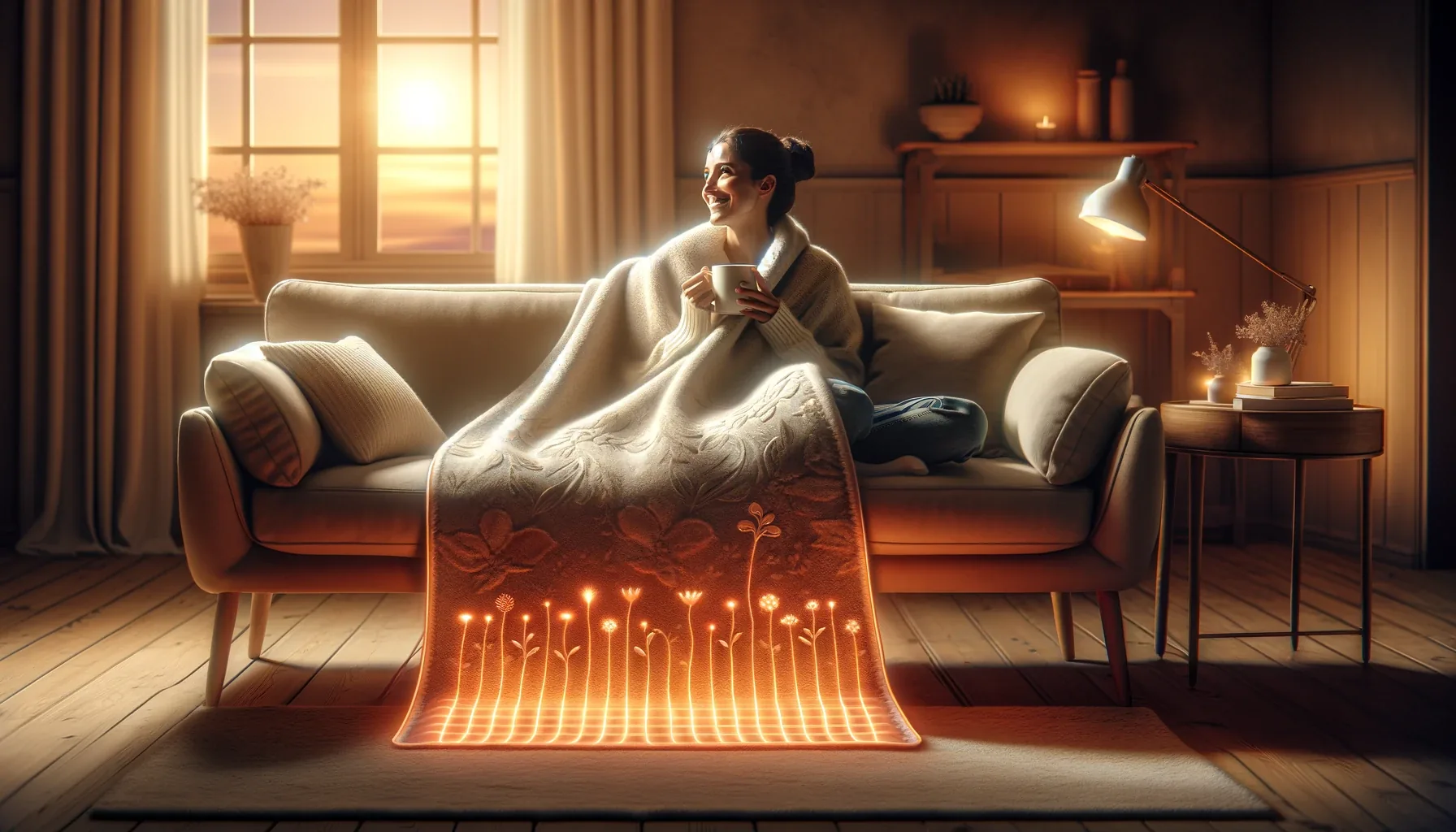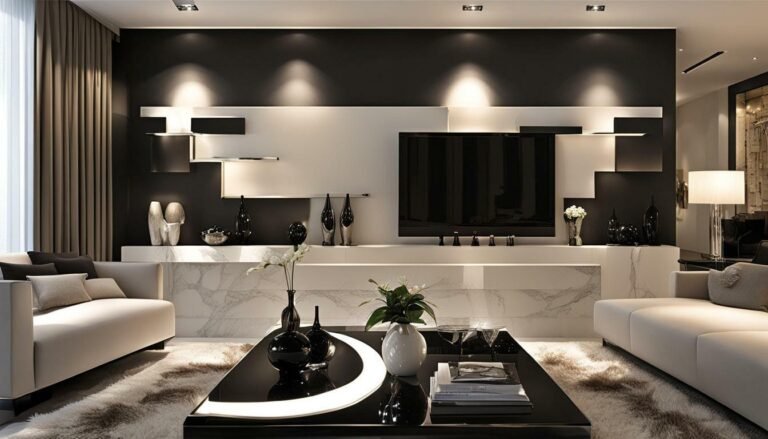Can You Sit on a Heated Throw
A heated throw is not just for draping over your shoulders; it can also be used as a warming cushion to sit on.
Can you sit on a heated throw? Yes, you can sit on a heated throw. Heated throws are designed to be used while sitting or lying down, providing warmth and comfort.
The versatility of heated throws makes them an attractive addition to any living space, offering both comfort and warmth during chilly days.
Whether you’re working at your desk or lounging on the sofa, a heated throw provides soothing heat that can extend beyond just wrapping around yourself.
When considering whether you can sit on a heated throw, there are factors to keep in mind such as the type of material, heating elements, and setting within the throw itself. Understanding how to use this multi-functional item safely ensures maximum enjoyment without compromising its purpose.
Key Takeaways
- When using a heated throw, ensure it is designed for sitting and has durable construction to withstand the pressure.
- Safety is paramount, so evaluate the manufacturer’s guidelines to determine if sitting on the heated throw is safe.
- Look for heated throws specifically suitable for sitting to ensure they provide adequate support and heat distribution.
- Choose a fabric that is comfortable for sitting and easy to clean to maintain the heated throw’s longevity.
- Regular cleaning and maintenance are essential to keep the heated throw hygienic and functioning optimally for sitting.
- Consider the health benefits and risks associated with prolonged sitting on a heated throw, and use it responsibly to avoid potential issues.
Understanding Heated Throw Design and Durability
Built-In Heating Elements
Heated throws are equipped with built-in heating elements that provide warmth when the throw is in use. These heated blankets are designed to distribute heat evenly throughout the throw, ensuring that users experience consistent warmth.
The heating elements are strategically placed within the layers of the throw to maximize comfort and efficiency. By understanding how these heating elements function, users can make informed decisions about their usage and maintenance.
The durability of heated throws depends on the quality of materials used in their construction. High-quality materials such as durable fabrics, reinforced stitching, and reliable electrical components contribute to a longer lifespan for heated throws.
For example, throws made from soft yet sturdy fleece material tend to withstand regular use without pilling or fraying, enhancing their durability.
Design and Construction
Understanding the design and construction of heated throws is crucial for ensuring their longevity.
The overall design includes not only the placement of heating elements but also features such as adjustable heat settings, safety mechanisms like automatic shut-off functions after a certain period of time or overheating protection.
Well-constructed edges and seams prevent wear and tear over time.
Users should also consider how easy it is to maintain a heated throw based on its design – whether it’s machine washable or requires spot cleaning only – which can impact its long-term usability.
When considering purchasing a heated throw, individuals should pay attention to specific details related to its design and construction; this includes examining factors such as fabric quality (e.g., plushness), cord length for convenient access to power sources while sitting comfortably on furniture pieces at home.
Evaluating the Safety of Sitting on Heated Throws
Temperature Control and Automatic Shut-Off Features
When considering whether you can sit on a heated throw, it’s crucial to assess the safety features, such as temperature control and automatic shut-off.
These features are designed to prevent overheating, reducing the risk of burns or fire hazards. For instance, if a heated throw reaches an unsafe temperature, the automatic shut-off feature will power off the device.
Protection is provided by these safety mechanisms to ensure that users can comfortably enjoy the warmth without worrying about excessive heat buildup. The presence of these features not only enhances user experience but also significantly reduces potential risks associated with sitting on a heated throw.
It’s important for consumers to carefully read product specifications and look for information regarding temperature control and automatic shut-off when purchasing a heated throw. By doing so, they can make informed decisions based on their specific safety needs.
Safety Certifications and Guidelines
Another essential aspect in determining whether you can sit on a heated throw safely is understanding its safety certifications and guidelines. Look for products that have been certified by recognised testing laboratories or organisations.
These certifications indicate that the heated throws have undergone rigorous testing to ensure compliance with safety standards.
Furthermore, familiarising oneself with manufacturer guidelines is critical in using heated throws safely. Manufacturers often provide instructions regarding safe usage practices and precautions to minimise any potential risks associated with prolonged use or improper handling of these devices.
By following established safety guidelines and adhering to manufacturer recommendations, individuals can mitigate any possible dangers related to sitting on a heated throw while maximising their comfort during use.
Potential Risks and Precautions
Understanding the potential risks associated with prolonged use of heated throws is crucial in making an informed decision about sitting on them.
While modern designs incorporate various safety features, it’s still important for users to be aware of potential hazards such as skin irritation or overheating due to extended periods of exposure.
To address these concerns effectively, individuals should take regular breaks from using heated throws especially at high temperatures; this allows their skin time to cool down naturally rather than being exposed continuously which could lead to discomfort or adverse effects over time.
Identifying Heated Throws Suitable for Sitting
Design Features
When choosing a heated throw for sitting, it’s essential to look for specific design features that cater to this purpose. Look for throws with reinforced stitching or extra padding to ensure durability and comfort during prolonged use.
The reinforced stitching prevents the heating elements from shifting around, maintaining an even distribution of warmth. Extra padding provides cushioning and support when sitting on the throw for extended periods.
It’s important to consider the potential wear and tear that may occur due to frequent sitting. Therefore, opting for a heated throw specifically designed for sitting ensures longevity and performance.
For example:
- A heated throw with quilted construction offers enhanced durability and resilience against regular use.
- Some models feature targeted heat zones in areas where one is likely to sit most often, such as the seat area or backrest.
Heat Settings
When searching for a suitable heated throw, consider models with adjustable heat settings tailored for prolonged sitting.
This feature allows users to customise the level of warmth according to their preferences and comfort needs while seated.
Lower heat settings may be preferable when using the throw as a seat warmer over an extended period.
The ability to adjust heat settings also enhances versatility; individuals can utilise the same heated throw not only while seated but also when relaxing on a sofa or recliner.
For instance:
- An adjustable controller enables users to select low or medium heat levels ideal for continuous use.
- Some advanced models offer programmable timers that automatically turn off after a certain duration, catering perfectly towards extended seating sessions without overheating.
Size, Weight, and Intended Use
Identifying suitable heated throws involves considering factors such as size, weight, and intended use specifically tailored towards sitting applications.
Opting for larger-sized throws ensures ample coverage when used as seating warmers on sofas or chairs without restricting movement.
Moreover:
- Lightweight options are more convenient if you plan on moving them between different seats frequently.
- Consider throws designed explicitly with ergonomic properties conducive to comfortable seating positions.
Choosing the Right Fabric for Heated Throws
Varying Levels
There are different fabric options available, such as fleece, microplush, and Sherpa. Each of these fabrics offers varying levels of comfort and warmth. For instance, fleece is known for its lightweight and breathable nature, making it a good choice for those who prefer a softer feel.
On the other hand, microplush provides a luxurious softness that can enhance the overall experience of using a heated throw.
Selecting a fabric that is soft, breathable, and easy to clean is crucial when considering whether you can sit on a heated throw comfortably. The right fabric not only ensures comfort but also impacts the performance of the heated throw when used for sitting purposes.
For example, if you plan to use the heated throw while sitting on your sofa or armchair for extended periods, choosing a fabric with excellent breathability can prevent overheating and discomfort.
Impact on Feel and Performance
The choice of fabric plays an essential role in determining how comfortable one feels while sitting on a heated throw.
Imagine snuggling up with your favourite book or watching TV while being enveloped by an ultra-soft microplush heated throw; this would certainly enhance your relaxation experience significantly compared to using an uncomfortable or scratchy material.
Moreover, besides influencing comfort levels during use as seating support,the chosen fabric’s quality directly affects how well it retains heat and distributes warmth evenly across its surface when employed as both bedding or seating coverings.
Cleaning and Maintenance of Heated Throws
Follow Manufacturer’s Instructions
It is crucial to follow the manufacturer’s instructions for cleaning to ensure the functionality and safety of heated throws. Different fabrics and heating elements may require specific care methods, so adhering to the provided guidelines is essential.
By following these instructions, users can maintain the quality of their heated throws while avoiding any damage that could occur from improper cleaning techniques.
Understanding how to clean a heated throw correctly not only ensures its longevity but also prevents potential hazards associated with incorrect maintenance.
For instance, using an unsuitable cleaning method might compromise the electrical components or fabric integrity, posing risks such as electric shocks or fires.
Therefore, it’s imperative to strictly adhere to the manufacturer’s recommended cleaning procedures.
Regular Maintenance for Prolonged Lifespan
Regular maintenance plays a vital role in prolonging the lifespan of heated throws. Spot cleaning any spills or stains promptly can prevent them from setting in and becoming more challenging to remove later on. Proper storage during off-seasons helps protect heated throws from dust accumulation and potential damage.
By incorporating regular maintenance practices into their routine, individuals can enjoy prolonged use of their heated throws without compromising on comfort or safety. For example, storing a heated throw properly when not in use reduces exposure to environmental factors that could contribute to wear and tear over time.
Understanding how frequently a heated throw should be cleaned based on usage patterns is also important for maintaining hygiene when sitting on it regularly. Users who utilise their heated throws daily may need more frequent spot-cleaning compared to those who use them occasionally.
Health Benefits and Risks of Heated Throws
Muscle Tension Relief
Sitting on a heated throw can be beneficial for relieving muscle tension. The warmth from the heated throw can help to relax tight muscles, providing comfort and alleviating stiffness.
This is especially advantageous for individuals who spend prolonged periods sitting, such as those working at a desk or watching television.
The gentle heat emitted by the throw can penetrate deep into the muscles, promoting increased blood circulation. This improved circulation aids in reducing muscle tension and soreness, contributing to an overall sense of relaxation during seated activities.
Potential Health Risks
However, it’s crucial to consider potential health risks associated with using heated throws for extended periods. Overheating is a primary concern when sitting on a heated throw for too long. Prolonged exposure to high temperatures can lead to discomfort, excessive sweating, dehydration, and even heat-related illnesses.
Moreover, skin irritation may occur if the heated throw is not used properly or if an individual has sensitive skin. Direct contact with overheated areas or prolonged exposure to intense heat could result in redness, itching, or burns on the skin.
Given these considerations about both benefits and risks related to sitting on a heated throw, it’s essential for individuals to make informed decisions regarding their use. Understanding how long one should sit on a heated throw and being aware of warning signs of overheating are vital aspects that contribute towards safe usage.
Using Heated Throws on Furniture
Protective Barrier
Placing a heated throw directly on furniture can lead to damage or discolouration. To prevent this, it’s essential to use a protective barrier such as a thin blanket or sheet between the heated throw and the furniture surface. This simple step acts as a safeguard, shielding the upholstery from direct heat exposure.
Using a protective barrier not only preserves the appearance of your furniture but also maintains its longevity. For instance, if you have a beautiful fabric sofa, placing a protective layer ensures that the heated throw‘s warmth is enjoyed without risking any harm to the upholstery material.
Compatibility Consideration
When considering using heated throws on different types of furniture upholstery, compatibility is crucial. Certain materials like leather may not be suitable for use with heated throws, while others such as microfiber or cotton are more resilient and can withstand the heat better.
It’s important to check manufacturer guidelines for each piece of furniture before using heated throws to ensure compatibility and avoid any potential damage.
For example, some sofas come with specific care instructions that advise against exposing them to high levels of heat. In such cases, opting for alternative heating methods or consulting with professionals regarding safe usage becomes imperative in maintaining both your furniture and ensuring safety.
Proper Usage Techniques
Utilising proper usage techniques when incorporating heated throws onto your furniture contributes significantly to maintaining both items effectively.
It’s essential to follow recommended heat settings and time limits specified by manufacturers for both the heated throw and the furniture being used with it.
Regularly checking for any signs of wear or damage on either the heated throw or your furniture is vital in ensuring their longevity and performance over time. By adhering to these practices, you can enjoy an added layer of comfort without compromising either item’s quality or lifespan.
Special Features in Heated Throws for Seating
Targeted Heating Zones
Some heated throws are designed with targeted heating zones, making them suitable for seated use. These specific areas of heat distribution ensure that when sitting down, the warmth is focused on the back and seat, providing a comfortable experience.
For example, a heated throw with targeted heating zones may have extra insulation in these areas to retain heat effectively.
These products often come with adjustable settings that allow users to control the level of heat emitted by each zone. This feature ensures that individuals can tailor the warmth to their preference while sitting on furniture such as sofas or armchairs.
By being able to customise the temperature in different areas, users can enjoy a personalised and cosy seating experience.
Enhanced Convenience Features
In addition to targeted heating zones, many heated throws for seating incorporate additional features such as remote controls and programmable timers.
The inclusion of a remote control allows users to adjust the temperature settings without needing to get up from their seat. This luxury adds convenience and ease of use when utilising a heated throw while seated.
Moreover, programmable timers enable individuals to set specific time intervals for the heated throw’s operation.
For instance, if someone plans on watching TV or reading for an extended period while using a heated throw for seating, they can program it to turn off after a certain number of minutes or hours.
This not only provides comfort but also promotes energy efficiency by preventing unnecessary usage.
Exploring these special features is essential when considering which product would be most suitable for seated use.
By taking into account factors such as targeted heating zones and enhanced convenience features like remote controls and programmable timers, individuals can identify the ideal heated throw that aligns with their needs and preferences.
Heated Throws Versus Heating Pads for Sitting
Coverage Area
Heated throws generally offer a larger coverage area compared to heating pads, making them more suitable for sitting. The extended reach of the heated throw ensures that it can cover the entire seating surface, providing consistent warmth and comfort.
This is particularly beneficial when using a heated throw on a chair or sofa, as it can envelop the entire seated area, keeping the user warm and cosy.
On the other hand, heating pads are typically designed for targeted heat application to specific areas of the body.
While they may be effective for providing warmth to particular parts of the body when sitting, such as the back or shoulders, their smaller coverage area makes them less ideal for overall seating comfort.
Power Source and Portability
When considering seated use, understanding the power source and portability of heated throws versus heating pads is crucial in making an informed choice.
Heated throws are often powered by electrical outlets or batteries, offering flexibility in usage based on accessibility to power sources.
This makes them suitable for various seating arrangements without being limited by cord length or proximity to electrical sockets.
In contrast, heating pads are commonly designed with cords that need to be plugged into electrical outlets.
While this provides consistent power supply, it may limit their mobility and adaptability when used while sitting in different locations where access to electrical sockets is restricted.
Overall Comfort
The overall comfort provided by heated throws surpasses that of heating pads, especially when used for prolonged periods while sitting. The soft fabric material of heated throws enhances comfort during extended use, creating a snug environment conducive to relaxation and warmth.
Some heated throws feature adjustable settings that allow users to customise heat levels according to their preferences.
Conversely, heating pads, although effective at delivering targeted heat relief when seated, may not offer the same level of overall comfort due to their focused design and lack of full-body coverage like heated throws do.
Final Remarks
In conclusion, understanding the design, safety, suitable fabrics, maintenance, health aspects, and special features of heated throws is crucial for their optimal use.
It is essential to consider these factors when using heated throws for seating to ensure both comfort and safety. With the right knowledge, individuals can make informed decisions about the most suitable heated throws for their specific needs.
For more in-depth insights on using heated throws for seating and other related topics, readers are encouraged to explore reputable sources and seek advice from experts in the field.
Frequently Asked Questions
Can you sit on a heated throw for an extended period?
It is not recommended to sit on a heated throw for an extended period as it may cause overheating or discomfort. Heated throws are designed for brief use and should be used according to the manufacturer’s guidelines.
Are there any safety concerns when sitting on a heated throw?
Sitting on a heated throw can pose safety risks such as overheating, burns, or damage to the product. It is important to follow the safety instructions provided by the manufacturer and avoid prolonged sitting on a heated throw.
What type of fabric is suitable for seated use with a heated throw?
Fabrics that are durable, heat-resistant, and comfortable for seating are ideal choices when using a heated throw. Look for materials like fleece or microfiber that can withstand the heat while providing comfort during seated use.
How should one clean and maintain a heated throw used for sitting?
Regularly check the manufacturer’s cleaning instructions and care recommendations specific to seated usage. Spot cleaning or gentle hand washing followed by air drying may be suitable methods to maintain hygiene and prolong the lifespan of your heated throw.
What special features in heated throws cater specifically to seated use?
Heated throws with features such as extra padding in seating areas, adjustable temperature settings suitable for prolonged sitting, and reinforced stitching around seating zones provide added comfort and durability when using them while seated.











